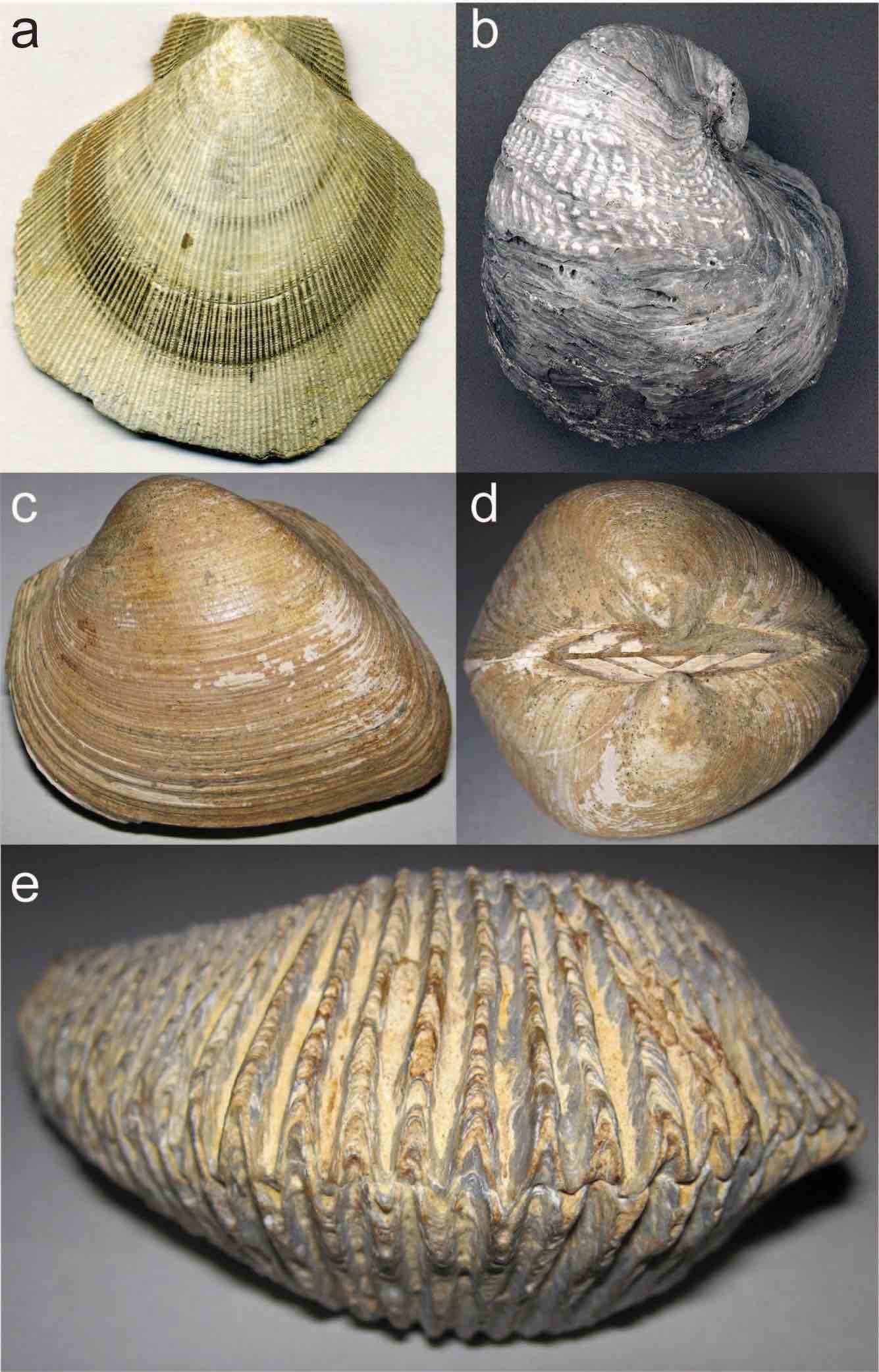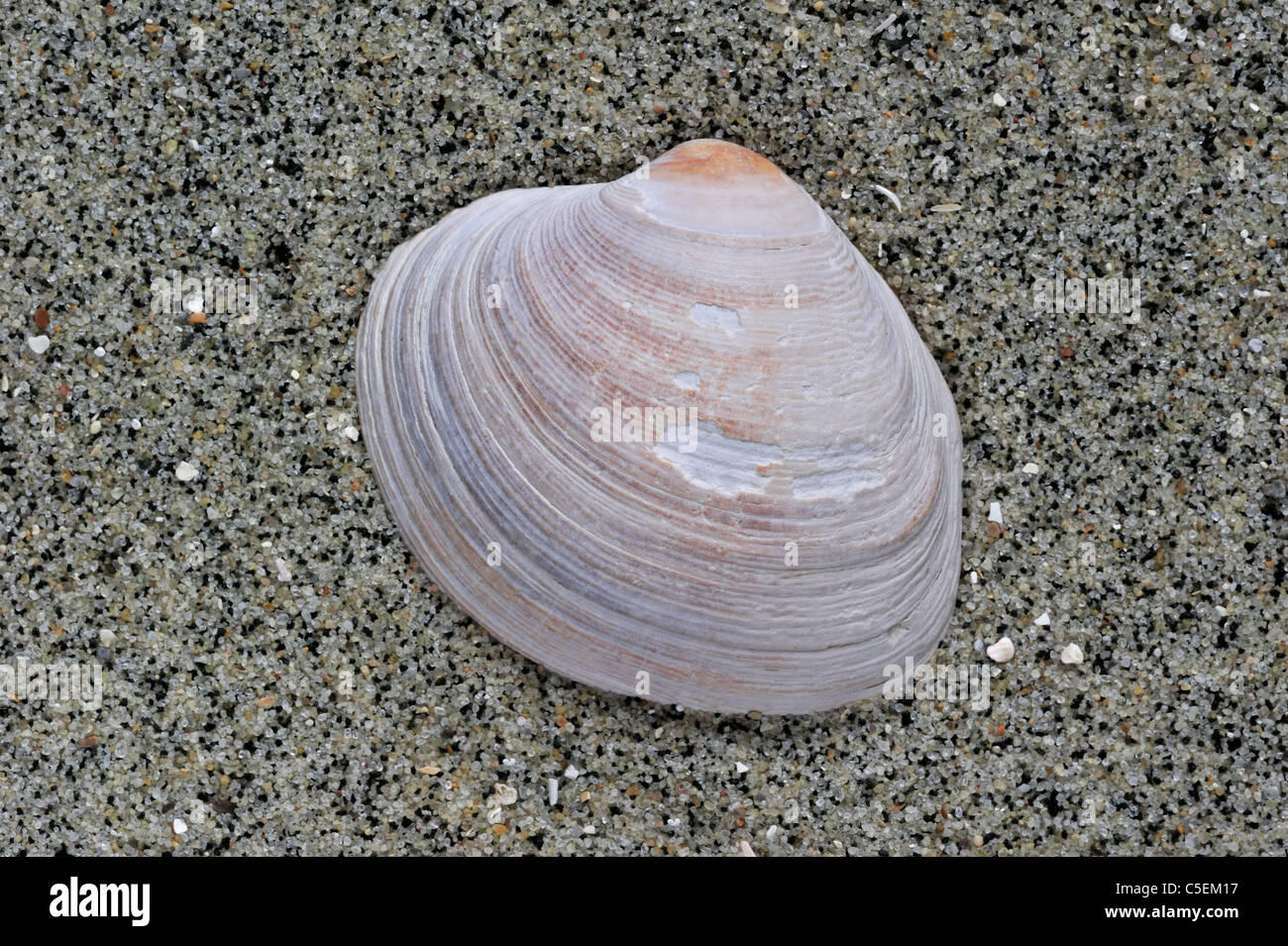Describe How a Clam Might Become a Fossil
Hopefully the rock layer that you are in will be in a place where a paleontologist can find you. Clams have shells that are in two parts called valves.

Clam Fossils Help Scientists Find Errors In Evolutionary Tree Calculations
For them to be fossilized they have to be buried and leave an imprint before they decompose.
. The valves are hinged along one edge. If the shells are buried by more sediment before they are worn away or dissolved they become fossilized. As a result of this investigation students should be able to state that after an organism or part of an organism is buried in mud its hard body parts become a fossil as the sediments around it become a rock.
Circle the best answer below. Fossilisation is so unlikely that scientists estimate that less one-tenth of 1 of all the animal species that have ever lived have become fossils. The Precambrian prior to 541 million years ago was the Age of Early Life Soft-bodied creatures like worms and jellyfish lived in the worlds oceans.
How did a clam become a fossil. Once a fossil has been formed it still might not become part of the fossil record. Most animals become fossilized by being buried in sediment.
Groundwater seeps around the organism and the minerals in the water gradually replace the minerals in the hard parts of the organism. The polished Clam Fossils on this page are from Madagascar and are about 150 million years old dating from the Jurassic Period. Less than 10 b.
We also have clams from Morocco and Madagascar. Clam fossils help scientists find errors in evolutionary tree calculations. Two are from the US Wyoming and Florida.
Over time these minerals turn into a stone replica of an organism. Clams sometimes called pelycopods Class Pelecypoda are filter-feeding animals with two identical shell halves. Insects with thin outside skeletons of chitin are not as easy to fossilize.
Both clams above belong to groups that would previously be assumed to originate before the last great extinction but the improved. Common Precambrian fossils include mats of algae called stromatolites microorganisms and simple animals. As the sand and mud builds up above you eventually the layer you are in hardens to rock.
How does the environment affect the formation of fossils. If minerals fill in this empty space and form a mineralised 3D shape of the organism it is referred to as a mould. Its no fun being a fossil if you arent discovered and studied.
By examining fossilized clams scientists found that a commonly used protocol hides the true extent of how species live and die through major extinctions. Once buried the fossil and surrounding rock might undergo extreme pressure and heat and the fossils could melt. Sometimes an insect is trapped in sticky material resin which comes out of some kinds of trees.
It became a fossil after it had died. You or whats left of you made it youre a fossil. Describe two natural processes that might destroy the fossil.
4 Maybe some of you who are familiar with the names listed may be able to associate them with the 2 clams in question if they are fossils. What is fossil clam. This is the Pelecypoda fauna list I have from the Fossil Collectors Guidebook to the North Sulfur River from the Occassionsl Papers of the Dallas Paleontological Society Vol.
Describe two ways an organism can become a fossil without being buried in sediment. Clams are filter feeders that pump water inside their bodies to strain out phytoplankton and other small organisms for food. Of all the organisms alive today what percentage do you think will eventually become fossils.
If the organism or part dissolves or decays out of. Sometimes a fossil consists of original shell material. Over time the clam-shell would get buried in sediment and eventually become a fossil.
Once fossils are formed they might be washed away by streams moved by glaciers carried by. Oct 19 2016. Are clam shells fossils.
They are commonly preserved as internal molds of the shell as the original calcium carbonate of the shell has been leached away. I can conclude that the once-living organism used to live in water because of the fact that the fossil is a clam-shell. If a fossil is buried by a lot of sediment it may become flattened or distorted beyond recognition.
Learn more and visit parks that preserve Precambrian fossils. The land remained barren. The most common fossils are shells of marine animals like clams snails or corals.
Many marine invertebrates like shells form fossils in this way. The hard shell of a clam is more likely to fossilize because it is more resistant to biological and environmental destruction. Describe three factors that could prevent an organism from long ago from ever turning up in a fossil collection today.
Fossils form through the process of mineral replacement beginning when an organism dies and is buried. Bulk prices available with some specimens. If the organisms remains are decomposed entirely leaving an empty space in the shape of the organism it is referred to as a cast.
How old are fossilized clam shells. Clams have a long fossil history first appearing in the late Cambrian Period about 510 million years ago. The most common fossils are shells of marine animals like clams snails or corals.
Fossil Clams for sale Polished and raw specimens. All of them are Guaranteed Authentic fossils. For this reason teeth bones and other hard parts of organisms are much more numerous in the fossil record than soft tissues.
Describe two natural processes that might destroy the fossil.

Chapter 7 Fossils The Story Of Earth An Observational Guide

Bivalves British Geological Survey

Shellfish Fossil High Resolution Stock Photography And Images Alamy
Shell Fossil Identification Treasure Quest Mining

Bivalves British Geological Survey

Fossil Cenozoic Crassatelline Bivalves From Peru New Species And Generic Insights

Illinois State Geological Survey Pelecypods Isgs

Holes In Fossil Shells Show Effects Of Competition And Evolution

Fun Fossil Activities Paleontological Research Institution

Illinois State Geological Survey Pelecypods Isgs
Shell Fossil Identification Treasure Quest Mining

Fossil Cenozoic Crassatelline Bivalves From Peru New Species And Generic Insights





Comments
Post a Comment